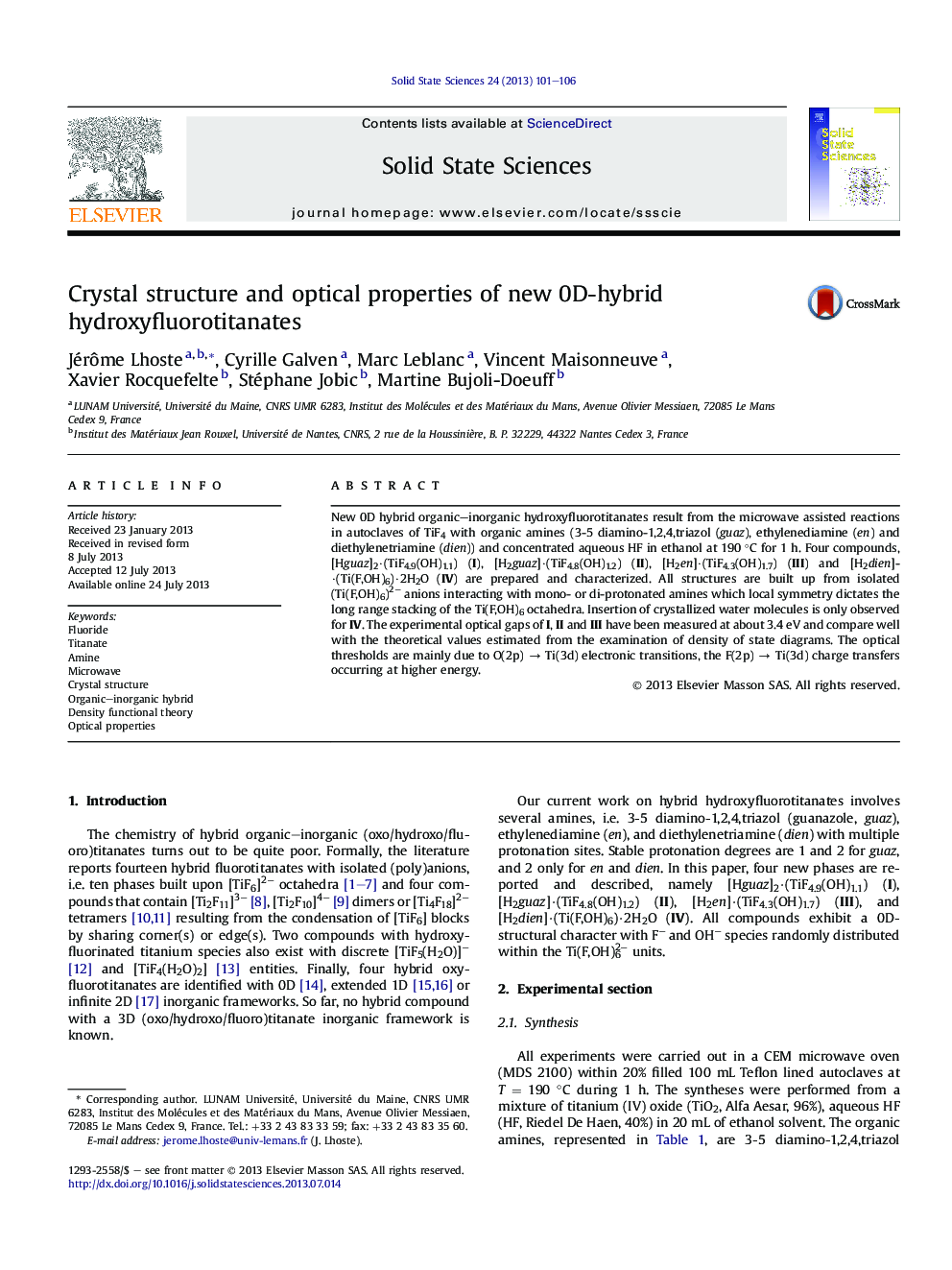| کد مقاله | کد نشریه | سال انتشار | مقاله انگلیسی | نسخه تمام متن |
|---|---|---|---|---|
| 1504535 | 1510998 | 2013 | 6 صفحه PDF | دانلود رایگان |

• Synthesis in solvothermal conditions of four 0D hybrid hydroxyfluorotitanates.
• Structures based on isolated (Ti(F,OH)6)2− anions.
• Inter-cycle π–π interactions between organic moieties.
• Experimental optical gaps close to 3.4 eV.
New 0D hybrid organic–inorganic hydroxyfluorotitanates result from the microwave assisted reactions in autoclaves of TiF4 with organic amines (3-5 diamino-1,2,4,triazol (guaz), ethylenediamine (en) and diethylenetriamine (dien)) and concentrated aqueous HF in ethanol at 190 °C for 1 h. Four compounds, [Hguaz]2·(TiF4.9(OH)1.1) (I), [H2guaz]·(TiF4.8(OH)1.2) (II), [H2en]·(TiF4.3(OH)1.7) (III) and [H2dien]·(Ti(F,OH)6)·2H2O (IV) are prepared and characterized. All structures are built up from isolated (Ti(F,OH)6)2− anions interacting with mono- or di-protonated amines which local symmetry dictates the long range stacking of the Ti(F,OH)6 octahedra. Insertion of crystallized water molecules is only observed for IV. The experimental optical gaps of I, II and III have been measured at about 3.4 eV and compare well with the theoretical values estimated from the examination of density of state diagrams. The optical thresholds are mainly due to O(2p) → Ti(3d) electronic transitions, the F(2p) → Ti(3d) charge transfers occurring at higher energy.
Figure optionsDownload as PowerPoint slide
Journal: Solid State Sciences - Volume 24, October 2013, Pages 101–106